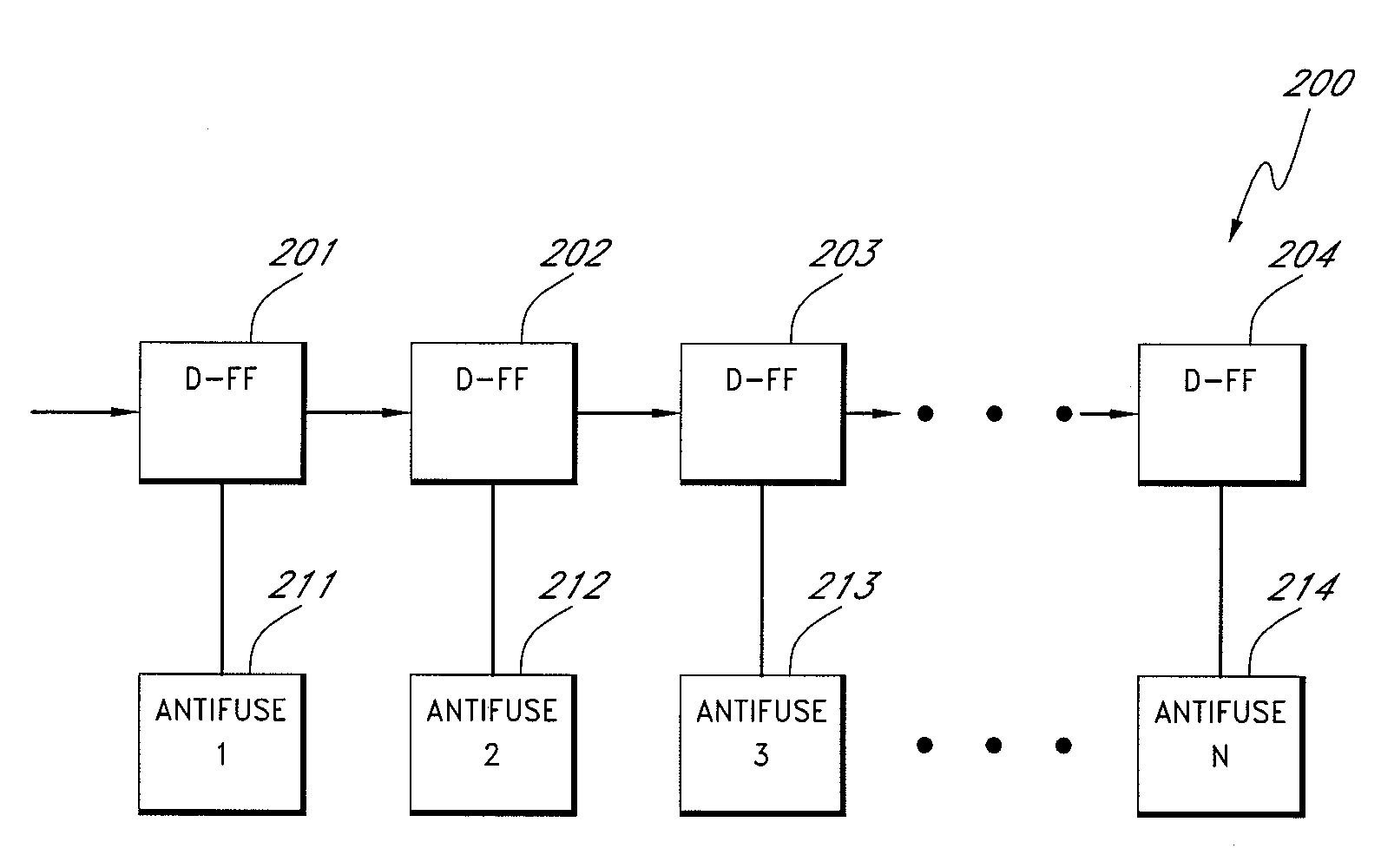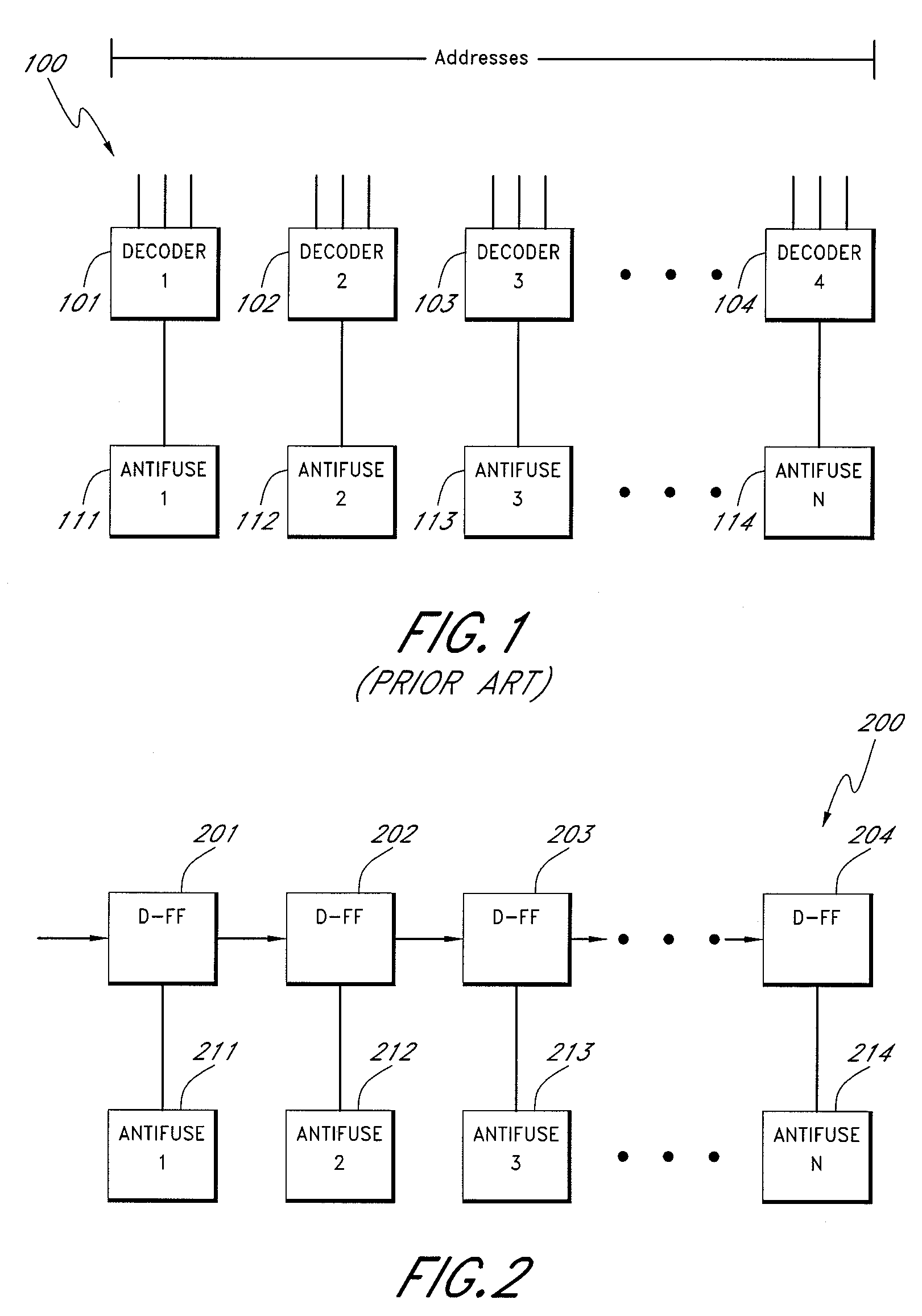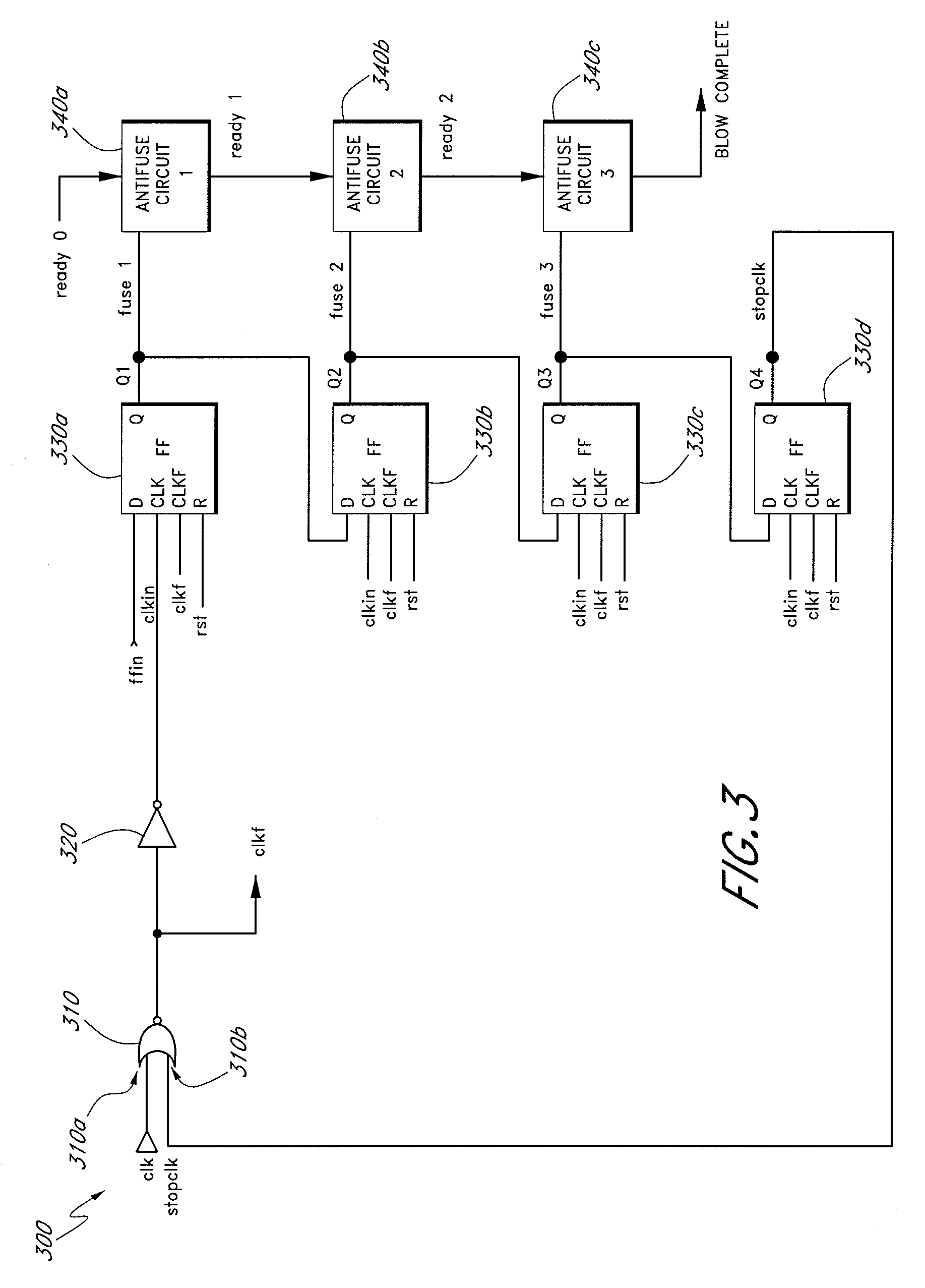Serial system for blowing antifuses
a technology of anti-fuses and serial systems, which is applied in the direction of semiconductor devices, digital storage, instruments, etc., can solve the problems of complex routing, slow program execution of parallel schemes, and inability to achieve complex routing,
- Summary
- Abstract
- Description
- Claims
- Application Information
AI Technical Summary
Benefits of technology
Problems solved by technology
Method used
Image
Examples
Embodiment Construction
Serial System for Blowing Antifuses
[0018]In one embodiment, a serial antifuse system is provided to blow a plurality of antifuses. In the serial antifuse system, antifuses are accessed in series, and are sequentially blown. This serial system does not use unique parallel addresses for individual antifuses. Thus, the serial system does not increase the amount of logic to decode the addresses of the antifuses as the number of antifuses increases. In addition, the serial system can minimize routing needs for the increased number of antifuses.
[0019]The serial system according to one embodiment also determines whether antifuses have been fully blown. The serial system is configured to blow antifuses in a sequential manner. Thus, the system permits relatively good use of blowing time and electrical current resources for the antifuse programming.
[0020]Although serially connected, the antifuses can be selectively blown based on a sequence. In the parallel method described above, each antifu...
PUM
 Login to View More
Login to View More Abstract
Description
Claims
Application Information
 Login to View More
Login to View More - R&D
- Intellectual Property
- Life Sciences
- Materials
- Tech Scout
- Unparalleled Data Quality
- Higher Quality Content
- 60% Fewer Hallucinations
Browse by: Latest US Patents, China's latest patents, Technical Efficacy Thesaurus, Application Domain, Technology Topic, Popular Technical Reports.
© 2025 PatSnap. All rights reserved.Legal|Privacy policy|Modern Slavery Act Transparency Statement|Sitemap|About US| Contact US: help@patsnap.com



